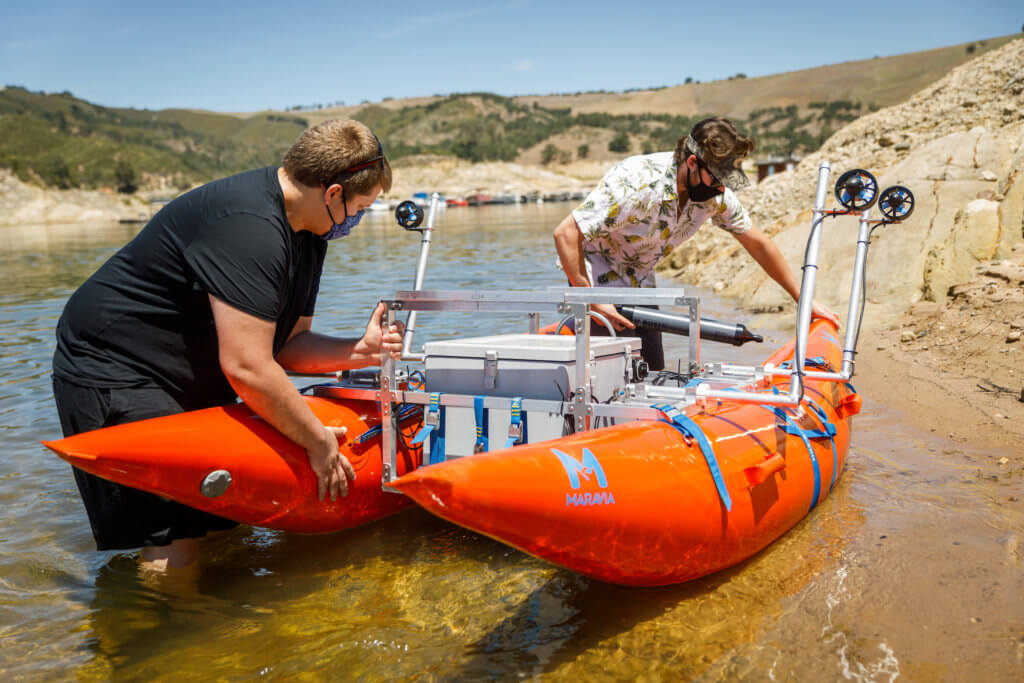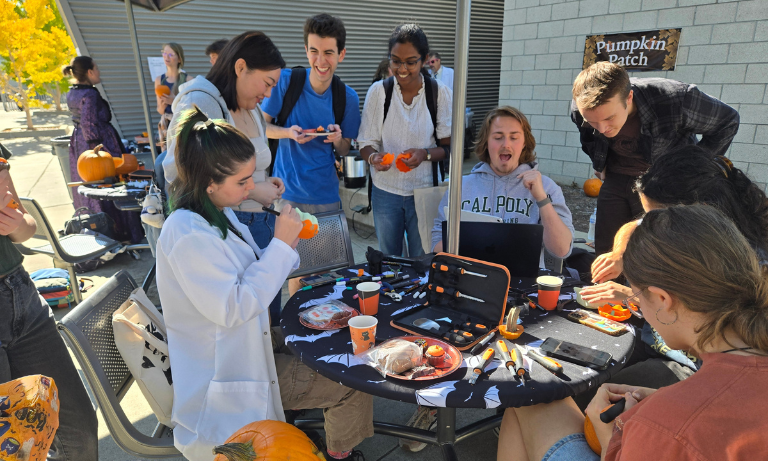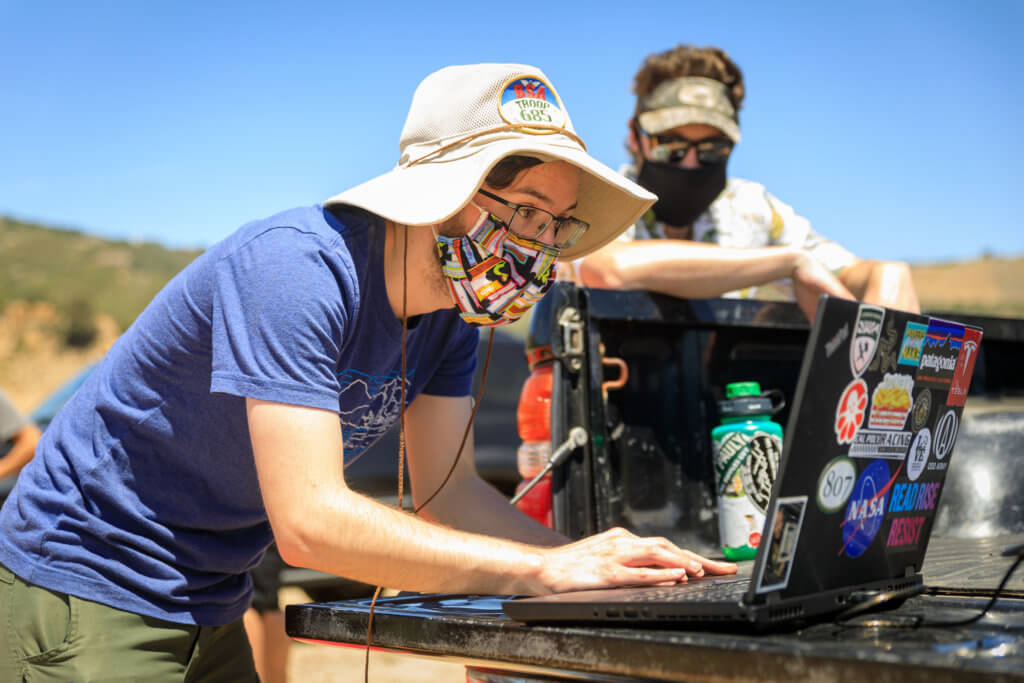
With water up to his knees, Jacob Davis steadies his team’s unmanned research raft near the Lake Nacimiento shoreline, then positions the raft’s adjustable thrusters so that they are now below the water’s surface.
“Motor arms are secured,” he calls out to the shore, then gives the raft a gentle nudge.
Nearby, team members Kahye Yu and Luke Vickerman are floating in kayaks, prepared to follow the raft around the lake, while Andrew Fleming is perched on a hill, a few yards from the shore, controlling the raft’s software on a laptop.
After nine months of researching, designing and manufacturing their raft, they are now putting it to the test – seeing if their creation can float and maneuver on a body of water.
When it does, Davis pumps his arms in the air and celebrates.
“I’m going to tell you I’m going to take lots of photos, and I’m going to cry myself to sleep tonight at a job well done because it was it was awesome just seeing it all come together,” he said.
You can read all about the team’s project, sponsored by Lawrence Livermore National Laboratory, on the Mechanical Engineering Project Expo web page, which includes a digital poster loaded with the project’s background, specifications, photos, videos and more.
While the College of Engineering’s spring Project Expo generally brings crowds of enthusiastic students, faculty and industry to the Engineering Plaza, this year’s expo is being held virtually due to the COVID-19 pandemic. But the virtual displays include impressive multi-media presentations that have encouraged students to expand their presentation capabilities.
Four departments are participating in the expo, in addition to nine interdisciplinary projects. The Mechanical Engineering Department has the most projects on display (46), followed by industrial and manufacturing (26), materials (20), and biomedical (8).
Most projects are sponsored by organizations outside of Cal Poly.
Peter Schuster, a mechanical engineering professor and senior project advisor, said faculty reach out to sponsors prior to the school year, then a list of potential projects is created. The first week of classes, students bid on which projects they would like to work on the rest of the school year.
“By incorporating industry into this process, it makes the projects realistic, and the students also get the exposure of working with real Industry sponsors under deadlines,” Schuster said. “And it actually includes a form of mentorship as well. They get to connect with someone currently working in industry. They’ll learn the practices and apply those while being supported by the teaching staff on the backside.”
Most of the projects seek to help a sponsor with a particular challenge.
The research raft project was designed to help Lawrence Livermore Laboratory create smaller research vessels that would be easier to transport. Meanwhile, a Materials Engineering Department project sponsored by TaylorMade Golf proposed to optimize the mechanical properties of a golf club by determining the most effective tempering heat-treatment parameters. Another mechanical engineering project, sponsored by Bull Outdoor Products, set out to create a premium, high temperature electric grill with even heat distribution.
Every year, several senior projects aim to help people facing challenges.
One Industrial & Manufacturing Engineering project sought to help the San Luis Obispo Police Department’s Community Action Team provide services to the homeless population by updating and improving information available both to the homeless population and the community as a whole.
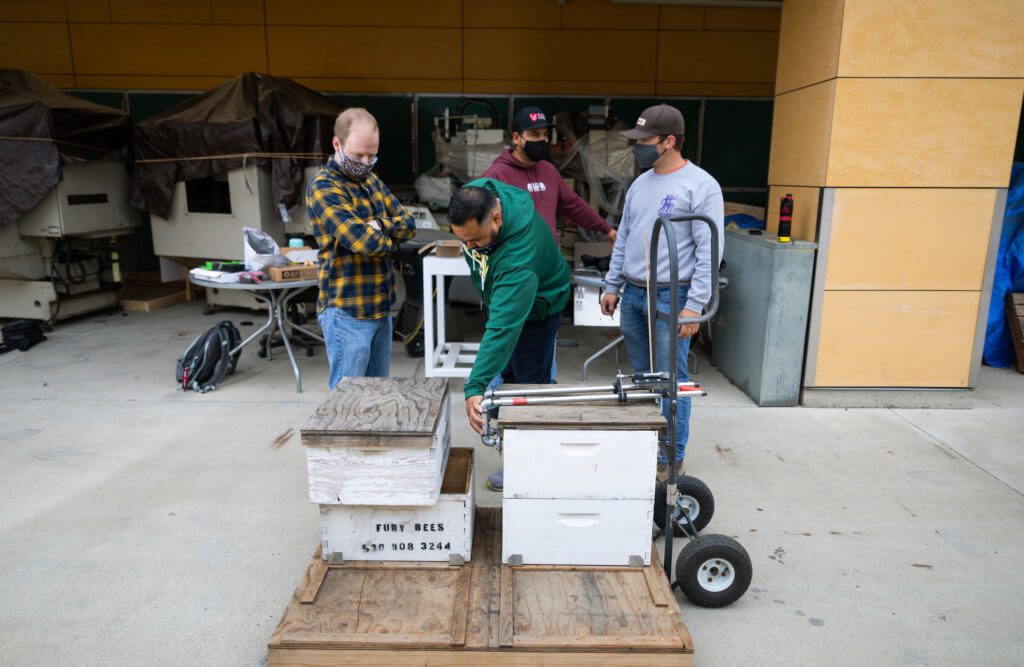
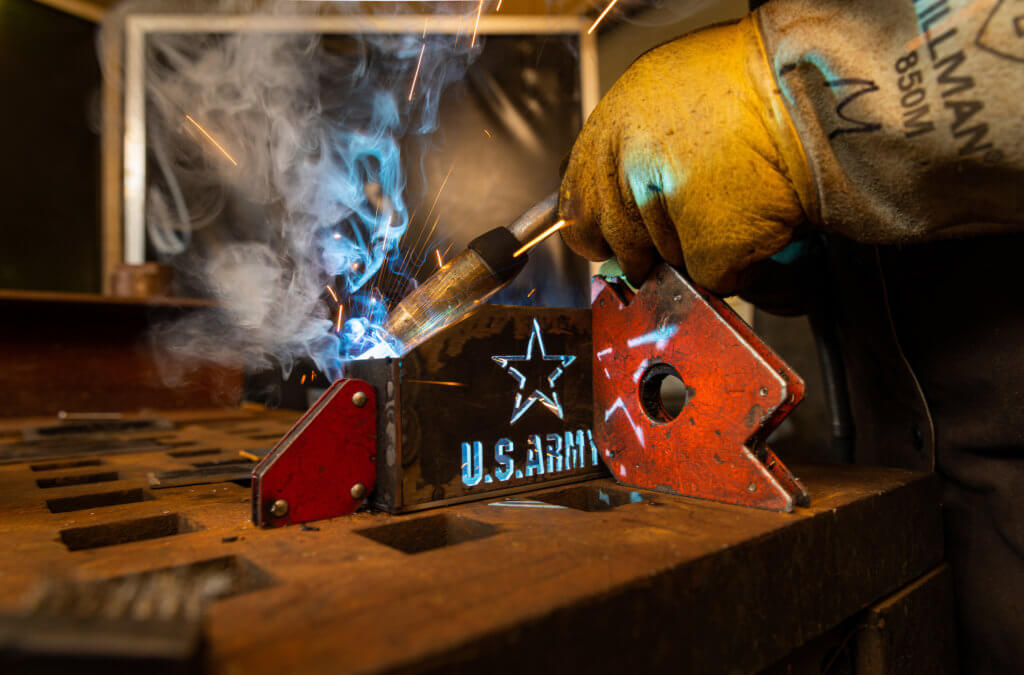
“The homeless population in San Luis Obispo is estimated to be around 1,200-1,600 homeless individuals. Of this population, only 20 percent actively seek long-term solutions,” said IME student Brandon Drury in his team’s video. “Our scope is to focus on the 20 percent seeking services and to ultimately improve the rate of services accepted over services offered.”
Focusing on younger audiences, a biomedical engineering project aimed to develop a device that can help detect Sudden Infant Death Syndrome in a young child prior to any episodes.
“It’s designed to record movements and breathing rates of the baby and alert the parents or clinicians if the movements stop so the baby can be revived,” Alec Cherveny explains in his team’s video.
One interdisciplinary team, consisting of industrial, electrical, materials and mechanical engineering students, created a self-propelling beach wheelchair that adaptive surfers can use to independently travel to and from the beach to surf.
While working with industry sponsors make the projects more realistic, working on a project that will directly help an individual has its own rewards. One mechanical engineering team adapted a dolly to make it easier for a beekeeper to lift boxes. The beekeeper, an Army veteran who lost two legs while serving in Afghanistan, often experiences pain while lifting dozens of honey-filled bee boxes.
“I genuinely enjoy helping people,” said Kyle Ladtkow, who – along with his three teammates – delivered the dolly to the veteran, who lives in Sacramento, this month.
Ladtkow said he has particularly been interested in projects that help specific individuals.
“It’s a lot more personal,” said Ladtkow, who has also been involved with Empower, a student club that helps people with physical challenges. “I feel like I can make more of a difference in somebody’s life.”

